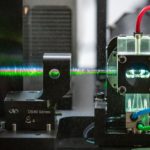Link to Pubmed [PMID] – 22510876
Blood 2012 Jul;120(2):424-30
Splenic sequestration of RBCs with reduced surface area and cellular deformability has long been recognized as contributing to pathogenesis of several RBC disorders, including hereditary spherocytosis. However, the quantitative relationship between the extent of surface area loss and splenic entrapment remains to be defined. To address this issue, in the present study, we perfused ex vivo normal human spleens with RBCs displaying various degrees of surface area loss and monitored the kinetics of their splenic retention. Treatment with increasing concentrations of lysophosphatidylcholine resulted in a dose-dependent reduction of RBC surface area at constant volume, increased osmotic fragility, and decreased deformability. The degree of splenic retention of treated RBCs increased with increasing surface area loss. RBCs with a > 18% average surface area loss (> 27% reduced surface area-to-volume ratio) were rapidly and completely entrapped in the spleen. Surface-deficient RBCs appeared to undergo volume loss after repeated passages through the spleen and escape from splenic retention. The results of the present study for the first time define the critical extent of surface area loss leading to splenic entrapment and identify an adaptive volume regulation mechanism that allows spherocytic RBCs to prolong their life span in circulation. These results have significant implications for understanding the clinical heterogeneity of RBC membrane disorders.



